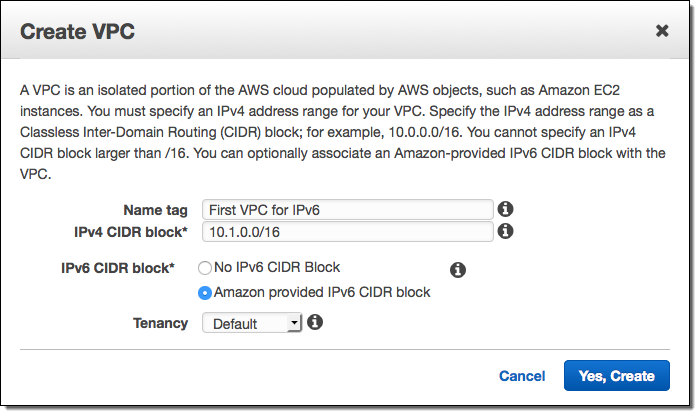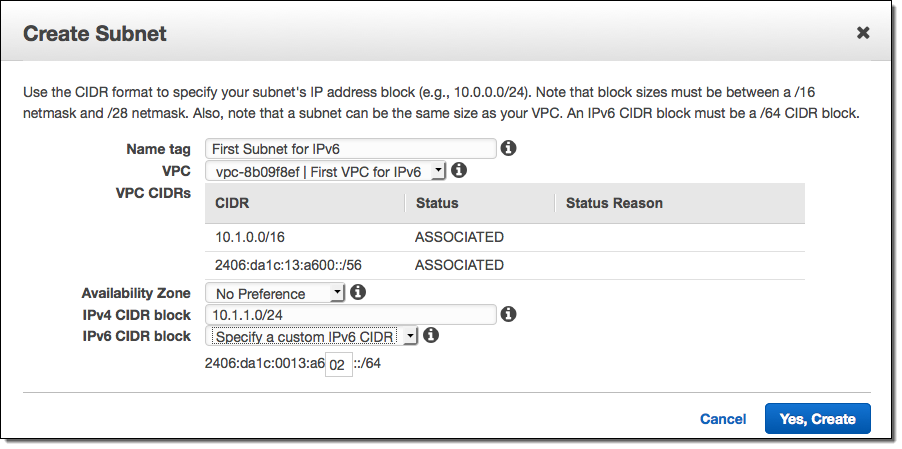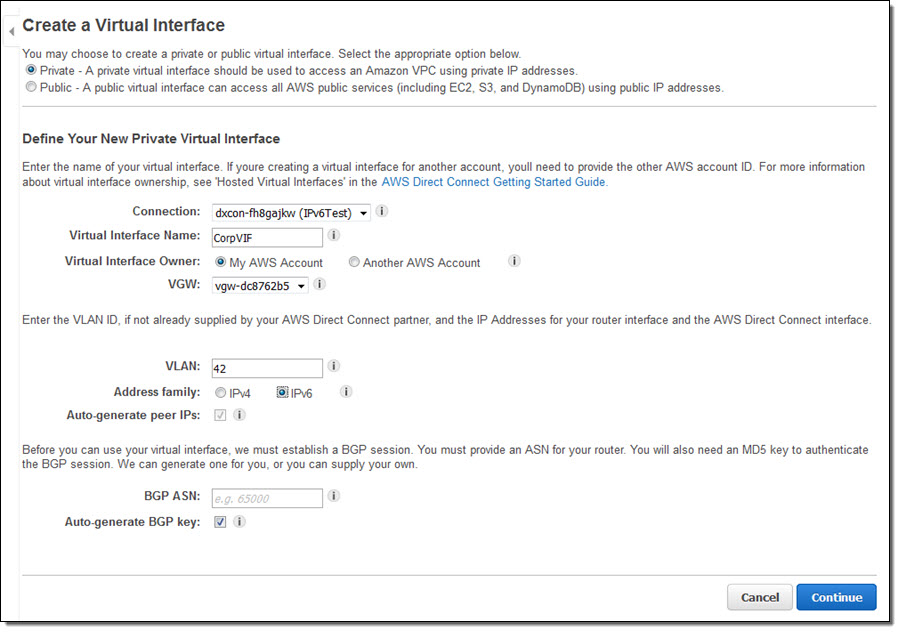AWS News Blog
New – IPv6 Support for EC2 Instances in Virtual Private Clouds
|
|
Update (7/13/2017): Since this post was published, IPv6 supported has been extended and now supports 15 Regions and Multiple AWS Services.
The continued growth of the Internet, particularly in the areas of mobile applications, connected devices, and IoT, has spurred an industry-wide move to IPv6. In accord with a mandate that dates back to 2010, United States government agencies have been working to move their public-facing servers and services to IPv6 as quickly as possible. With 128 bits of address space, IPv6 has plenty of room for growth and also opens the door to new applications and new use cases.
IPv6 for EC2
Earlier this year we launched IPv6 support for S3 (including Transfer Acceleration), CloudFront, WAF, and Route 53. Today we are taking the next big step forward with the launch of IPv6 support for Virtual Private Cloud (VPC) and EC2 instances running in a VPC. This support is launching today in the US East (Ohio) Region and is in the works for the others.
IPv6 support works for new and existing VPCs; you can opt in on a VPC-by-VPC basis by simply checking a box on the Console (API and CLI support is also available):

Each VPC is given a unique /56 address prefix from within Amazon’s GUA (Global Unicast Address); you can assign a /64 address prefix to each subnet in your VPC:

As we did with S3, we make use of a dual-stack model that assigns each instance an IPv4 address and an IPv6 address, along with corresponding DNS entries. Support for both versions of the protocol ensures compatibility and flexibility to access resources and applications.
Security Groups, Route Tables, Network ACLs, VPC Peering, Internet Gateway, Direct Connect, VPC Flow Logs, and DNS resolution within a VPC all operate in the same way as today. Application Load Balancer support for the dual-stack model is on the near-term roadmap and I’ll let you know as soon as it is available.
IPv6 Support for Direct Connect
The Direct Connect Console lets you create virtual interfaces (VIFs) with your choice of IPv4 or IPv6 addresses:

Each VIF supports one BGP peering session over IPv4 and one BGP peering session over IPv6.
New Egress-Only Internet Gateway for IPv6
One of the interesting things about IPv6 is that every address is internet-routable and can talk to the Internet by default. In an IPv4-only VPC, assigning a public IP address to an EC2 instance sets up 1:1 NAT (Network Address Translation) to a private address that is associated with the instance. In a VPC where IPv6 is enabled, the address associated with the instance is public. This direct association removes a host of networking challenges, but it also means that you need another mechanism to create private subnets.
As part of today’s launch, we are introducing a new Egress-Only Internet Gateway (EGW) that you can use to implement private subnets for your VPCs. The EGW is easier to set up and to use than a fleet of NAT instances, and is available to you at no cost. It allows you to block incoming traffic while still allowing outbound traffic (think of it as an Internet Gateway mated to a Security Group). You can create an EGW in all of the usual ways, and use it to impose restrictions on inbound IPv6 traffic. You can continue to use NAT instances or NAT Gateways for IPv4 traffic.
Available Now
IPv6 support for EC2 is now available in the US East (Ohio) Region and you can start using it today at no extra charge. It works with all current-generation EC2 instance types with the exception of M3 and G2, and will be supported on upcoming instance types as well.
IPv6 support for other AWS Regions is in works and I’ll let you know (most likely via a tweet), just as soon as it is ready!
— Jeff;
